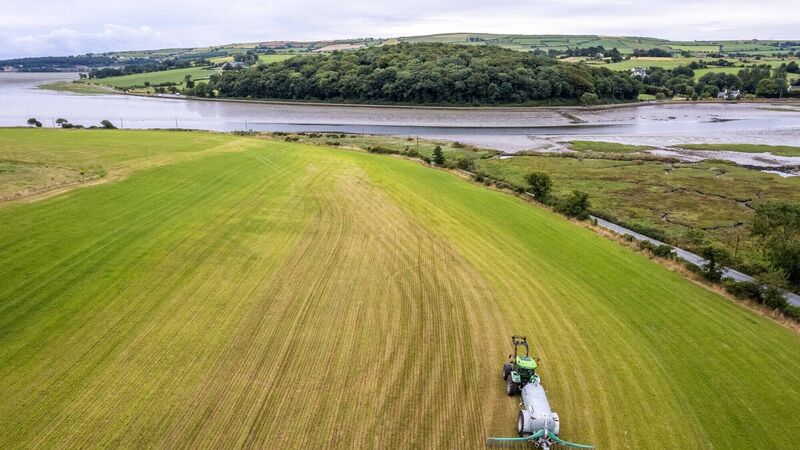Farm Finance: Cost-effective actions farmers can take to reduce their carbon footprint

The incorporation of clover and utilisation of low emission spreading equipment has reduced chemical nitrogen usage on farms which delivers financial savings and return along with increasing the palatability of grass, feed intake and milk output. File Picture: Andy Gibson.
Teagasc and AIB recently held a ‘Signpost’ event at Innishannon House Hotel as part of their national campaign in highlighting actions the farming community can take to reduce their carbon footprint.
The Signpost Programme aims to offer guidance to farmers and educate the wider community on what actions farmers have been and are taking to reduce emissions and is supported by 64 partners including co-operatives and processors. The Programme has a particular emphasis on using demonstrator farms within the community to allow farmers see and hear directly from their counterparts on what strategies have been implemented, how they have been put into action and the farmers' experience of how the strategies have worked on their farm.
AIB Regional Agri Advisor Michael Murphy and Tom O’Dwyer, Head of Teagasc Signpost Programme spoke at the event along with Raymond Goggin who farms with his wife and family just north of Bandon milking 124 cows, supplying Dairygold with 537kg MS/cow.
Speaking about the practices adopted on his own farm, Raymond suggested that the actions can be a win-win for profitability and the environment. The incorporation of clover and utilisation of low-emission spreading equipment has reduced chemical nitrogen usage on-farm, which delivers and financial saving and return along with increasing the palatability of grass, feed intake and milk output. Raymond also has been using protected urea for the past three years and hasn’t noticed any downsides from using the product over the traditional CAN or urea products.
Tom O’Dwyer suggested that all farms have the capacity to take the low-hanging fruit such as switching fertiliser types, soil testing and applying appropriate fertiliser tailoring to match soil needs which will make a meaningful impact on reducing emissions. Grainne Hurley from Teagasc suggested that a combination of incremental changes across a broad spectrum will deliver a large reduction in carbon footprint of farms.
Ireland is already committed to reducing its carbon footprint from Agriculture by 25% by 2030 and water quality improvements are expected should Ireland wish to retain its nitrogen derogation, so whilst the individual actions at farm level are important and merited, they are also needed on a collective basis in order that the stated objectives are met.
Tom O’Dwyer suggested that absent of voluntary changes at farm level, the options available to farmers to reduce their carbon footprint will become less voluntary and more prescriptive as can be seen for farmers availing of the nitrates derogation. The financial and environmental improvements to soil fertility and grassland management are equally applicable to beef farmers and dairy farmers.
Over the longer-term breeding strategies can be employed with a view to increasing herd EBI, milk solids per cow, and reducing of finishing age of off-spring can layer up on the more immediate carbon savings. Tom O’Dwyer suggested that it is likely that the agriculture industry will need to employ newer technologies such as feed additives in order to deliver the final carbon-cutting jigsaw piece. A full schedule of the options available to farmers to reduce their carbon emissions is available from the Teagasc Signpost Programme.
In his closing comments, Raymond Goggin said that as a custodian of his farm for the next generation he was anxious to make the farm sustainable from a financial, environmental and social perspective and that’s it’s a unwritten charter for every farmer to try and pass on the farm in a better state that when they acquired it. An open day will be held on Raymond Goggin’s farm later this month where farmers will be able to see first-hand the changes he has adopted.


